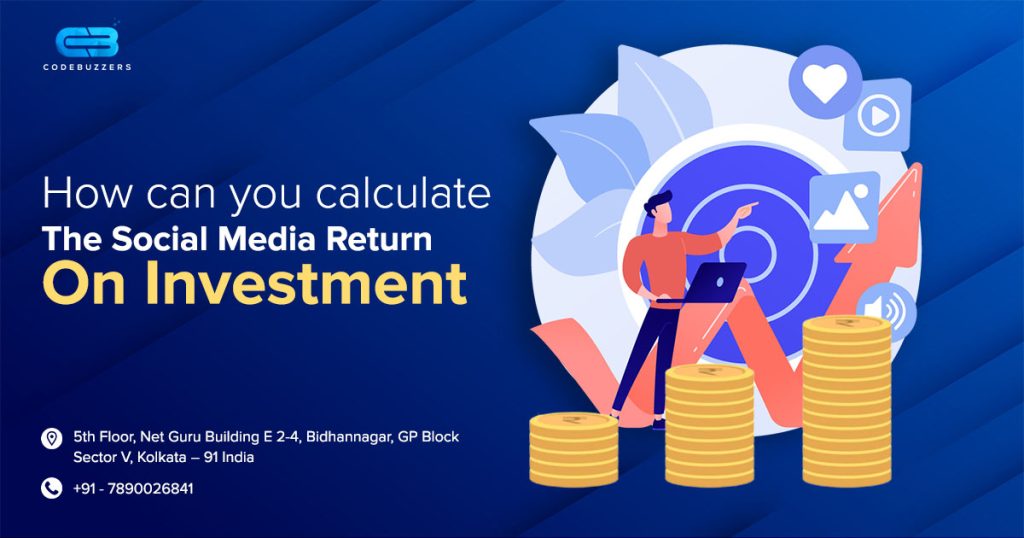How Can You Calculate The Social Media Return on Investment?
If you can’t measure it, you can’t manage it when it comes to social media marketing ROI. This is true in many facets of business, but especially in social media. While it is true that social actions are more difficult to quantify and assign a direct value to, that is not just possible but necessary.
You can’t effectively modify your plan depending on performance if you can’t prove a value. We’ve outlined how to compute social ROI and just use it to your advantage.
How to Calculate the Return on Investment in Social Media Marketing
- Establish Objectives:
Setting goals is essential before starting any new (or improving current) activities. These objectives should be channels specific and well-considered. They’ll also serve as a starting point for assessing your social media return on investment. What are the benefits of having a Facebook page for your business? What exactly are you attempting to achieve? What are the real-world advantages of using social media for your business?
Many businesses find that online marketing channels don’t generate direct response income, but that doesn’t mean they aren’t influencing behaviors and sales. Focus on Digital Marketing Agency is a common social goal.
- Increasing brand awareness
- Getting people to visit your website
- Increasing customer involvement
- Obtaining new clients.
The first two aims, enhancing brand recognition but also driving consumers to the site, will be used in our case. Each of these, however, would take the same stages.
- Establish KPIs to Track Marketing Objectives
Define KPIs (key performance indicators) for each goal to track your progress. If you’re not familiar with the term, a KPI is a statistic that is used to assess characteristics that indicate performance. We’ll utilize the following KPIs because our goal is to drive website traffic and improve brand recognition.
Example:
Enhance brand awareness Impressions are one of the key performance indicators (KPIs).
Entice visitors to your website. Website clicks are a key performance indicator (KPI).

- Determine the values that underpin social media objectives:
It’s time to assign value to your KPIs after you’ve set your goals and KPIs. This is perhaps the most difficult aspect, but it’s crucial for calculating your ROI. It’s crucial to figure out how this kind of objective affects your overall financial and business situation.
Example:
- Brand Recognition Value:
You may calculate the worth of an impression by comparing it to what you would invest elsewhere. Perhaps the CPM (cost for thousand exposures) market rate is $40. Then, for organic social, that number would translate to $40 CPM. Assume you have 50,000 monthly social impressions.
- Spending Hard but also Soft Market research Costs:
One of the best parts of social media is how low the costs are. Aside from different advertisement charges, many people consider the channel to be free. This is simply not true. Make that the efforts and money invested in the channel are properly accounted for. It takes time to create photographs, material, and postings. In addition to the hard spending, compare the number of resources and time.
Example:
Your business spends $500 on advertising across many platforms. You have a web designer to create who works for one hour each week and a social media manager who works for five hours per week to handle social media channels.
- ROI Calculation for Social Media Marketing:
Once you’ve completed steps 1-4, tracking ROI is a simple calculation. It’s just the total profit multiplied by the whole cost multiplied by 100. It’s only a matter of entering your KPIs and soft and hard goals into the calculation once you’ve determined their value. Here’s how we did it in our example:
Example: ROI = ($4500 (profit) – $1200 (cost) / $1200 (cost) X 100.
2.75X ROI = 275 percent

- Ongoing Optimization and Regular Reporting
Calculating overall online networking ROI is a continuous process. It necessitates continual analysis and reporting in order to achieve optimization.
Establish a regular reporting schedule and use KPIs to track progress over time. We advocate sticking to a regular schedule, which is usually weekly or monthly. Keep a close eye on the stats. Make a note of any triumphs or modifications. Don’t be hesitant to try out different Digital Marketing Agency; merely use the reporting to assess their effectiveness.
Don’t be scared to change your targets or KPIs once you’ve figured out the ROI. You can discover that your objectives have shifted or that your outcomes have supported a different objective. That’s fine! Because social media is always changing, so should your plan.
You need to find the Digital Marketing Agency worked with thousands of work experience and top national executives to help them achieve sustainable growth for the years. Are you willing to undertake your web and business to new heights? We’re here to motivate you to succeed.



